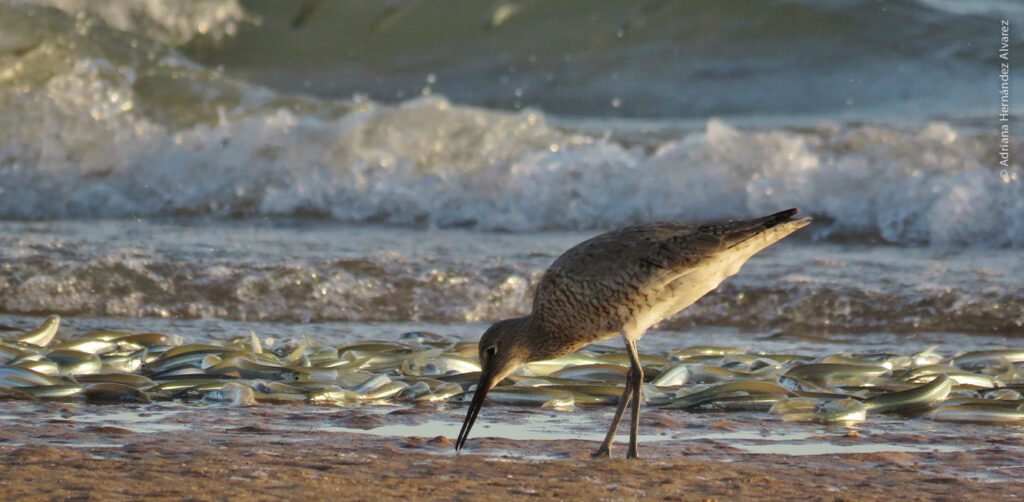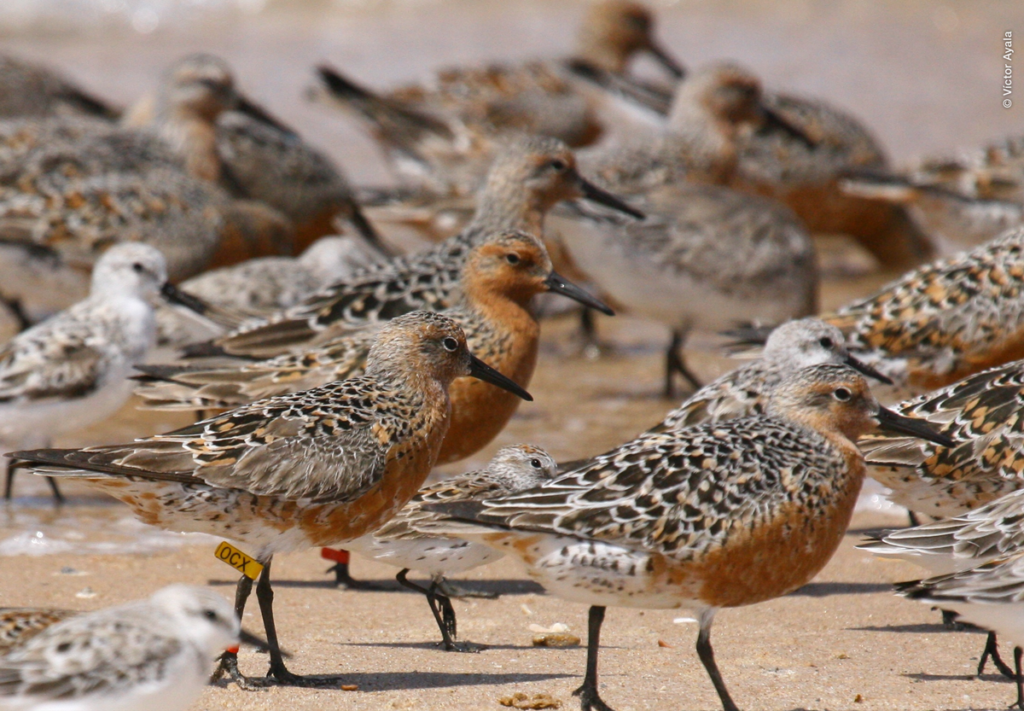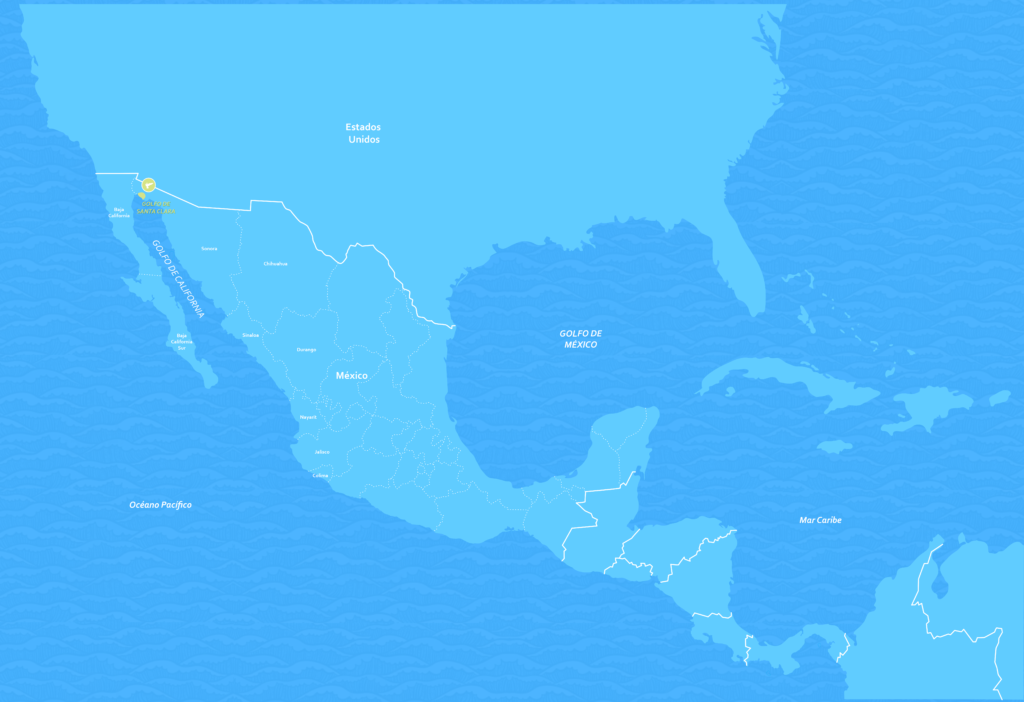Every spring, just after high tides, between February and May, the Gulf of Santa Clara beaches experience a unique spectacle. Thousands of Gulf Grunions (Leuresthes sardina) come together for a reproductive cycle`s frenzy. The females come out to the shore, and bury their bodies partially in the sand to deposit their eggs. Thousands of males congregate around them to shake their bodies vigorously and fertilize the eggs. This event takes place over a period of to two hours, with each fish remaining out of the water for about twenty seconds.
This is an event of great ecological importance, since, in addition to allowing the massive reproduction of the Gulf Grunion, thousands of shorebirds and other predators come to the site to take advantage of the abundance of fish to feed.
The Gulf Grunion or “Pejerrey” is an endemic fish of the Gulf of California, similar to the Sardine, with a length of about 25 centimeters. In recent years, it has become a conservation icon for the residents of the Gulf of Santa Clara, as well as an attraction for visitors who come to witness the spawning season. Unfortunately, the massive presence of fishes makes them vulnerable to motorized vehicles. To protect this unique species, actions to delimit the area and ensure its protection is necessary.

In 2015, the community took the first step when a group of residents of the Gulf of Santa Clara started working in the protection of the Gulf Grunion and its habitat. Training actions were carried out for residents and visitors, with advice from the Upper Gulf of California Biosphere Reserve and the Colorado River Delta, as well as Pronatura Noroeste and other environmental organizations.
Since then, the group has been sustained by local women. This community group is an example of civil society acting for conservation purposes, as they are completely in charge
of sharing key information and carrying out recreational activities for visitors. The group called “Cuidando al Playero rojizo y al Pejerrey” (Caring for Pacific Red Knot and Gulf Grunion) and focuses on the protection of these two representative species of the Gulf of Santa Clara. The interrelationship between both species is due to the fact that the Pacific Red Knot (Calidris canutus roselaari), an endangered subspecies, feeds mainly on Gulf Grunion eggs.
Following up the community´s achievement, in 2022 we supported the installation of a temporary fence to protect the spawning grounds of the Gulf Grunion. By delimiting this safe strip, the Gulf Grunion’s incubation period went smoothly, and at the same time, the Reddish Sandpiper fed on the beaches of the Gulf of Santa Clara.

As Pronatura Noroeste we offer accompaniment, experience and scientific support to the women of the Gulf of Santa Clara in this successful conservation task. Likewise, the community has the support of the Bird Laboratory of the Autonomous University of Baja California Sur (UABCS) and the Biosphere Reserve, in what constitutes a model of preservation that can be replicated in other regions of the country.
Join us to keep the Gulf Grunion and Red Knot habitat a reality.













